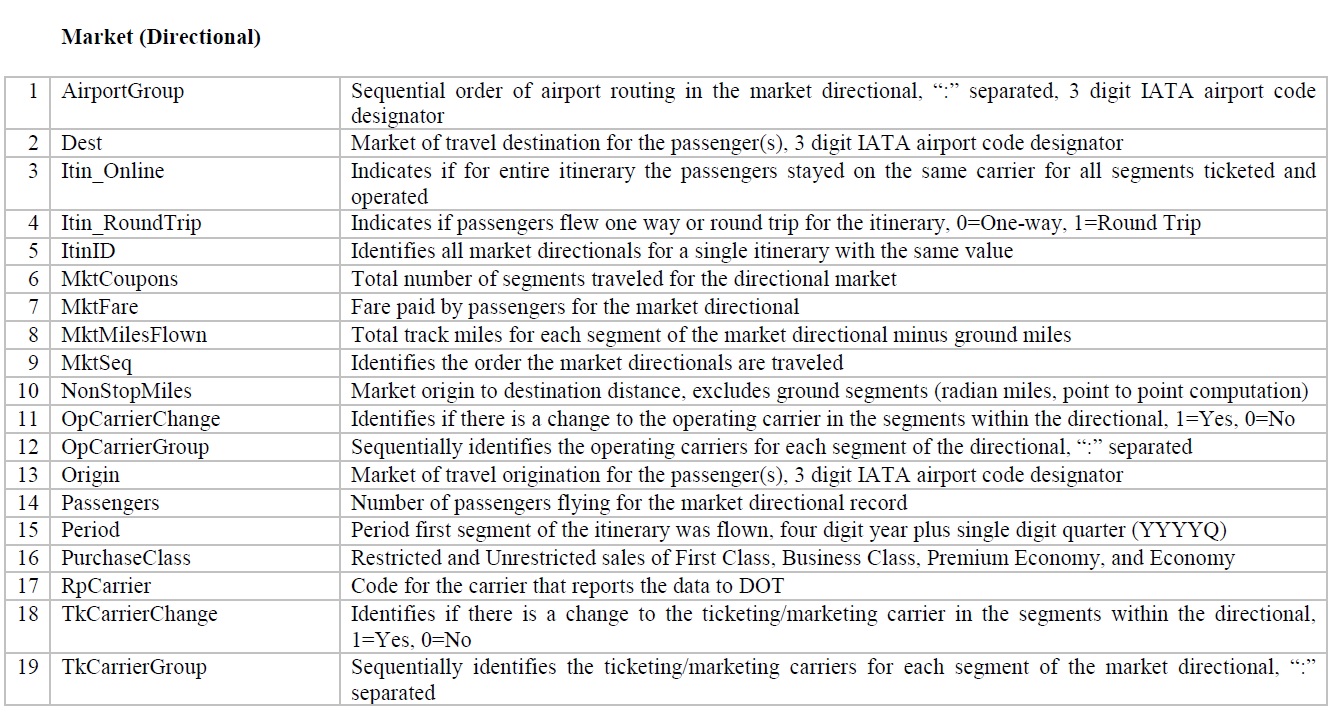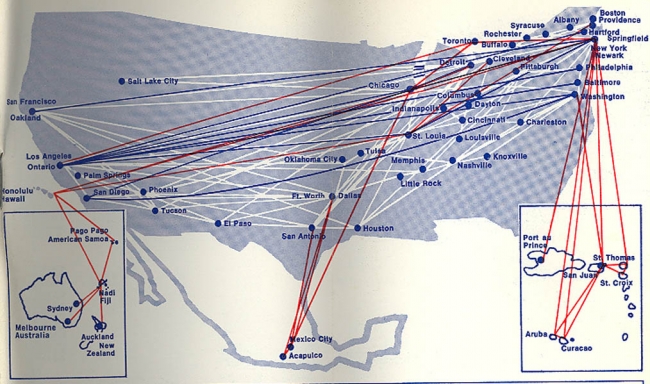American Airlines and Qantas became joint venture partners in 2011. That means they’re allowed to coordinate schedule and pricing. These arrangements also frequently include revenue-sharing.
Competitors Delta and Virgin Australia are also joint venture partners.
The American arrangement with Qantas, unlike Delta-Virgin Australia, was approved in the US with the argument that the two airlines did not fly overlapping routes.
“AA and QF [Qantas] have no overlapping nonstop transpacific routes. AA states that it does not have aircraft currently capable of providing nonstop service between the U.S. and Australia and that its existing labor agreements preclude nonstop flights over U.S.-South Pacific stage lengths.
“Accordingly, we conclude that American is unlikely to become a nonstop competitor between the U.S. and Australia, and that no reduction in the number of nonstop competitors would result from approving the application.”
When American announced Sydney service starting in December, they did so as part of an enhanced joint venture with Qantas.

Sydney Opera House
Qantas didn’t have the aircraft to serve San Francisco. By turning over a Los Angeles flight to American, they have shuffle aircraft and serve a new U.S. market.
The enhanced joint venture also has American on the verge of announcing Auckland, New Zealand service which is a market that Qantas exited in the past.
American’s current access to Boeing 777-300ERs make right-sizing Sydney flights, where Qantas believes it has too much capacity, possible. And Boeing 787 aircraft makes American’s Auckland possible (along with their domestic US feed and Qantas’ base of customers on both sides of the Tasman Sea).

American 777-300ER Business Class

View of the Wing: American Airlines Boeing 787
The enhanced joint venture, though, just ran into a speed bump at the US Department of Transportation. Rather than approving additional cooperation between American and Qantas, they’ve issued an order asking for more information (.pdf) even as American’s Sydney service is about to start December 17. If it took them five months to ask for more information, it raises concerns – regardless of their eventual decision – over how long it will take them to come to a conclusion.
Unsurprisingly there are objections to the American-Qantas arrangement. The DOT docket shows confidentiality affadavits from United Airlines and Air New Zealand, two competitors to American and Qantas who presumably would like the government to stand in the way of this partnership. In other words, they’ve filed objections but have done so in a way that the public can’t see.
The Department of Transportation is asking for:
- What specific benefits become possible with anti-trust immunity that wouldn’t be possible without it. They note that American announced Sydney service without anti-trust immunity so appear to be presuming that such a flight is possible with a joint venture, though I’m not so sure. Certainly Qantas’ San Francisco service wouldn’t be immediately possible, and American’s contemplated Auckland service becomes unlikely. Here’s what the DOT has in mind:

- Somehow a separate question, DOT wants to know how these same factors are affected without a grant of anti-trust immunity.
- They’re specifically asking for 5 year forecasts in capacity growth, new non-stop markets, and even revenue and one-time investments in IT to form the joint venture (which have presumably been proceeding apace on the presumption of approval).
- Plans for 2016 and 2017 (schedules and aircraft) with and without a joint venture, as well as short- and long-term goals and metrics for the business plan.
- Information about Qantas relationships with Global Distribution Services, and information about slot rules in Sydney (something the DOT really should have and know…).
In all, 15 questions complicated enough to require an appendix detailing a technical description of the required dataset.

Well, more work for the lawyers I guess!
To me, if we get competition on San Francisco – Sydney, new Auckland service, and an American Airlines foothold into the region (even if – as with Los Angeles – Sydney it trades off with larger aircraft that Qantas currently deploys) that’s a pretty good tradeoff.
American flew Dallas – Honolulu – Sydney between February 1990 and February 1992 with a DC-10-30. American also serviced Australia in the early 1970s with a Boeing 707. That service began August 1, 1970, and ended in March 1974 when American swapped their route authorities with Pan Am for additional Caribbean operations. The joint venture brings American back to Australia for the first time in nearly 24 years.

American’s Route Network: June 1972
While some won’t like the anti-trust immunity granted to Delta-Virgin Australia already on the route, or anti-trust immunity generally (such as United’s deal with Lufthansa or American’s with British Airways/Iberia/Finnair), it’s also a relatively small market — smaller than US-Japan where anti-trust immunity hasn’t faced hurdles and one where there’s already an immunized joint venture on the route albeit with a smaller player than Qantas.
No doubt United and Air New Zealand (and Delta/Virgin Australia) would love to see this killed. Hopefully the DOT’s delay — five months to ask questions — doesn’t get in the way of these new flight choices we’ll have.


What does this mean to people already booked on the AA LAX-SYD flights after December 17? I’m booked on February 29 and returning later in March.
Interesting. I’m surprised Delta didn’t complain.
I also assume that TWA (or other AA victims) never flew to Australia or NZ years ago either?
@bludevil American can still operate these flights even if they do not have antitrust immunity to coordinate schedules and pricing. If they were to cancel the flights I expect they would reaccommodate passengers on Qantas. (Although we have absolutely no reason to think American will not operate these flights as planned at this point.)
As you alluded to, I think these joint ventures stifle competition and result in higher prices for consumers. Nonetheless, if the gov.’t is going to permit it in other instances, I don’t see any difference in this case.
Wow, this is a lot of highly technical information and, frankly, is not remotely an area of expertise for me. But, I think I followed it pretty well. Like the first comment, I am scheduled on one of these flight that were made available through this effort. I am flying SYD-SFO in early February. So, I’d be surprised if that route is immediately impacted, if at all. I guess I won’t worry at all about this until I am given reason to worry about it. If they do have to reaccomodate me, I wouldn’t mind being on a flight to LAX or more preferably DFW. But, wishful thinking at the moment.